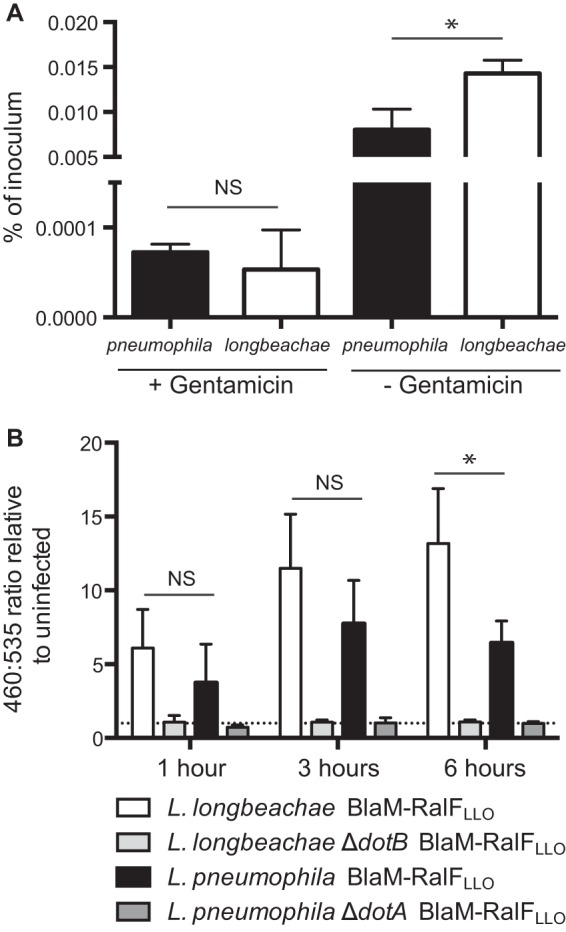FIG 4.

L. longbeachae and L. pneumophila behave similarly in nonphagocytic cells. (A) A549 cells were infected with L. pneumophila (black bars) and L. longbeachae (white bars) at an MOI of 100 for 2 h, followed by a further 1 h either with or without gentamicin before cells were lysed and bacteria were enumerated. Following gentamicin treatment, equivalent numbers of bacteria, as a percentage of the inoculum, were recovered (NS, not significant; P = 0.499, calculated using an unpaired two-tailed t test). Without the gentamicin treatment significantly more L. longbeachae bacteria were recovered than L. pneumophila bacteria (*, P = 0.016), indicating that more L. longbeachae bacteria attach to the A549 cells. (B) Dot/Icm effector translocation during A549 infection was examined at 1 h, 3 h, and 6 h postinfection. L. longbeachae NSW150 (white bars), L. longbeachae ΔdotB (light gray bars), L. pneumophila 130b (black bars), and L. pneumophila ΔdotA (dark gray bars) expressing BlaM-RalFLLO were used to infect A549 cells at an MOI of 200. At appropriate times postinfection, the BlaM substrate CCF2-AM was added. Translocation of the BlaM-RalFLLO fusion protein was determined by measuring the change in the 460 nm/535 nm fluorescence emission ratio when cells were excited at 415 nm. The mean ratio relative to the ratio in uninfected cells is presented ± standard deviation of at least three independent experiments. At 1 h and 3 h postinfection there is no significant difference between the wild-type L. longbeachae and L. pneumophila infections (NS); however, at 6 h postinfection more translocation by L. longbeachae is observed (*, P = 0.044).
